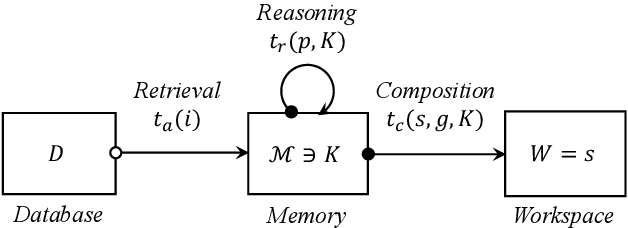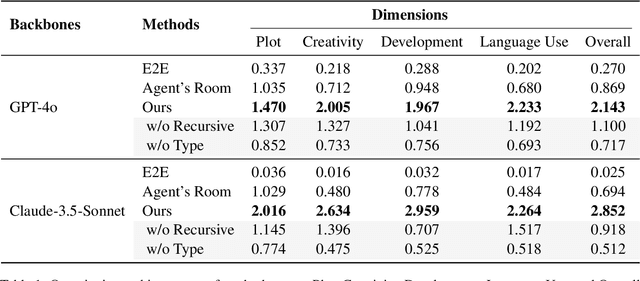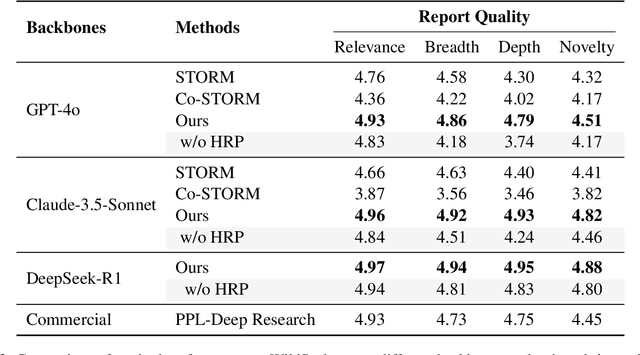Jürgen Schmidhuber
Fairness Overfitting in Machine Learning: An Information-Theoretic Perspective
Jun 09, 2025Abstract:Despite substantial progress in promoting fairness in high-stake applications using machine learning models, existing methods often modify the training process, such as through regularizers or other interventions, but lack formal guarantees that fairness achieved during training will generalize to unseen data. Although overfitting with respect to prediction performance has been extensively studied, overfitting in terms of fairness loss has received far less attention. This paper proposes a theoretical framework for analyzing fairness generalization error through an information-theoretic lens. Our novel bounding technique is based on Efron-Stein inequality, which allows us to derive tight information-theoretic fairness generalization bounds with both Mutual Information (MI) and Conditional Mutual Information (CMI). Our empirical results validate the tightness and practical relevance of these bounds across diverse fairness-aware learning algorithms. Our framework offers valuable insights to guide the design of algorithms improving fairness generalization.
Mixture of Sparse Attention: Content-Based Learnable Sparse Attention via Expert-Choice Routing
May 01, 2025Abstract:Recent advances in large language models highlighted the excessive quadratic cost of self-attention. Despite the significant research efforts, subquadratic attention methods still suffer from inferior performance in practice. We hypothesize that dynamic, learned content-based sparsity can lead to more efficient attention mechanisms. We present Mixture of Sparse Attention (MoSA), a novel approach inspired by Mixture of Experts (MoE) with expert choice routing. MoSA dynamically selects tokens for each attention head, allowing arbitrary sparse attention patterns. By selecting $k$ tokens from a sequence of length $T$, MoSA reduces the computational complexity of each attention head from $O(T^2)$ to $O(k^2 + T)$. This enables using more heads within the same computational budget, allowing higher specialization. We show that among the tested sparse attention variants, MoSA is the only one that can outperform the dense baseline, sometimes with up to 27% better perplexity for an identical compute budget. MoSA can also reduce the resource usage compared to dense self-attention. Despite using torch implementation without an optimized kernel, perplexity-matched MoSA models are simultaneously faster in wall-clock time, require less memory for training, and drastically reduce the size of the KV-cache compared to the dense transformer baselines.
Directly Forecasting Belief for Reinforcement Learning with Delays
May 01, 2025Abstract:Reinforcement learning (RL) with delays is challenging as sensory perceptions lag behind the actual events: the RL agent needs to estimate the real state of its environment based on past observations. State-of-the-art (SOTA) methods typically employ recursive, step-by-step forecasting of states. This can cause the accumulation of compounding errors. To tackle this problem, our novel belief estimation method, named Directly Forecasting Belief Transformer (DFBT), directly forecasts states from observations without incrementally estimating intermediate states step-by-step. We theoretically demonstrate that DFBT greatly reduces compounding errors of existing recursively forecasting methods, yielding stronger performance guarantees. In experiments with D4RL offline datasets, DFBT reduces compounding errors with remarkable prediction accuracy. DFBT's capability to forecast state sequences also facilitates multi-step bootstrapping, thus greatly improving learning efficiency. On the MuJoCo benchmark, our DFBT-based method substantially outperforms SOTA baselines.
Can Video Diffusion Model Reconstruct 4D Geometry?
Mar 27, 2025Abstract:Reconstructing dynamic 3D scenes (i.e., 4D geometry) from monocular video is an important yet challenging problem. Conventional multiview geometry-based approaches often struggle with dynamic motion, whereas recent learning-based methods either require specialized 4D representation or sophisticated optimization. In this paper, we present Sora3R, a novel framework that taps into the rich spatiotemporal priors of large-scale video diffusion models to directly infer 4D pointmaps from casual videos. Sora3R follows a two-stage pipeline: (1) we adapt a pointmap VAE from a pretrained video VAE, ensuring compatibility between the geometry and video latent spaces; (2) we finetune a diffusion backbone in combined video and pointmap latent space to generate coherent 4D pointmaps for every frame. Sora3R operates in a fully feedforward manner, requiring no external modules (e.g., depth, optical flow, or segmentation) or iterative global alignment. Extensive experiments demonstrate that Sora3R reliably recovers both camera poses and detailed scene geometry, achieving performance on par with state-of-the-art methods for dynamic 4D reconstruction across diverse scenarios.
Measuring In-Context Computation Complexity via Hidden State Prediction
Mar 17, 2025



Abstract:Detecting when a neural sequence model does "interesting" computation is an open problem. The next token prediction loss is a poor indicator: Low loss can stem from trivially predictable sequences that are uninteresting, while high loss may reflect unpredictable but also irrelevant information that can be ignored by the model. We propose a better metric: measuring the model's ability to predict its own future hidden states. We show empirically that this metric -- in contrast to the next token prediction loss -- correlates with the intuitive interestingness of the task. To measure predictability, we introduce the architecture-agnostic "prediction of hidden states" (PHi) layer that serves as an information bottleneck on the main pathway of the network (e.g., the residual stream in Transformers). We propose a novel learned predictive prior that enables us to measure the novel information gained in each computation step, which serves as our metric. We show empirically that our metric predicts the description length of formal languages learned in-context, the complexity of mathematical reasoning problems, and the correctness of self-generated reasoning chains.
Beyond Outlining: Heterogeneous Recursive Planning for Adaptive Long-form Writing with Language Models
Mar 11, 2025



Abstract:Long-form writing agents require flexible integration and interaction across information retrieval, reasoning, and composition. Current approaches rely on predetermined workflows and rigid thinking patterns to generate outlines before writing, resulting in constrained adaptability during writing. In this paper we propose a general agent framework that achieves human-like adaptive writing through recursive task decomposition and dynamic integration of three fundamental task types, i.e. retrieval, reasoning, and composition. Our methodology features: 1) a planning mechanism that interleaves recursive task decomposition and execution, eliminating artificial restrictions on writing workflow; and 2) integration of task types that facilitates heterogeneous task decomposition. Evaluations on both fiction writing and technical report generation show that our method consistently outperforms state-of-the-art approaches across all automatic evaluation metrics, which demonstrate the effectiveness and broad applicability of our proposed framework.
On the Convergence and Stability of Upside-Down Reinforcement Learning, Goal-Conditioned Supervised Learning, and Online Decision Transformers
Feb 08, 2025Abstract:This article provides a rigorous analysis of convergence and stability of Episodic Upside-Down Reinforcement Learning, Goal-Conditioned Supervised Learning and Online Decision Transformers. These algorithms performed competitively across various benchmarks, from games to robotic tasks, but their theoretical understanding is limited to specific environmental conditions. This work initiates a theoretical foundation for algorithms that build on the broad paradigm of approaching reinforcement learning through supervised learning or sequence modeling. At the core of this investigation lies the analysis of conditions on the underlying environment, under which the algorithms can identify optimal solutions. We also assess whether emerging solutions remain stable in situations where the environment is subject to tiny levels of noise. Specifically, we study the continuity and asymptotic convergence of command-conditioned policies, values and the goal-reaching objective depending on the transition kernel of the underlying Markov Decision Process. We demonstrate that near-optimal behavior is achieved if the transition kernel is located in a sufficiently small neighborhood of a deterministic kernel. The mentioned quantities are continuous (with respect to a specific topology) at deterministic kernels, both asymptotically and after a finite number of learning cycles. The developed methods allow us to present the first explicit estimates on the convergence and stability of policies and values in terms of the underlying transition kernels. On the theoretical side we introduce a number of new concepts to reinforcement learning, like working in segment spaces, studying continuity in quotient topologies and the application of the fixed-point theory of dynamical systems. The theoretical study is accompanied by a detailed investigation of example environments and numerical experiments.
Upside Down Reinforcement Learning with Policy Generators
Jan 27, 2025Abstract:Upside Down Reinforcement Learning (UDRL) is a promising framework for solving reinforcement learning problems which focuses on learning command-conditioned policies. In this work, we extend UDRL to the task of learning a command-conditioned generator of deep neural network policies. We accomplish this using Hypernetworks - a variant of Fast Weight Programmers, which learn to decode input commands representing a desired expected return into command-specific weight matrices. Our method, dubbed Upside Down Reinforcement Learning with Policy Generators (UDRLPG), streamlines comparable techniques by removing the need for an evaluator or critic to update the weights of the generator. To counteract the increased variance in last returns caused by not having an evaluator, we decouple the sampling probability of the buffer from the absolute number of policies in it, which, together with a simple weighting strategy, improves the empirical convergence of the algorithm. Compared with existing algorithms, UDRLPG achieves competitive performance and high returns, sometimes outperforming more complex architectures. Our experiments show that a trained generator can generalize to create policies that achieve unseen returns zero-shot. The proposed method appears to be effective in mitigating some of the challenges associated with learning highly multimodal functions. Altogether, we believe that UDRLPG represents a promising step forward in achieving greater empirical sample efficiency in RL. A full implementation of UDRLPG is publicly available at https://github.com/JacopoD/udrlpg_
How to Correctly do Semantic Backpropagation on Language-based Agentic Systems
Dec 04, 2024Abstract:Language-based agentic systems have shown great promise in recent years, transitioning from solving small-scale research problems to being deployed in challenging real-world tasks. However, optimizing these systems often requires substantial manual labor. Recent studies have demonstrated that these systems can be represented as computational graphs, enabling automatic optimization. Despite these advancements, most current efforts in Graph-based Agentic System Optimization (GASO) fail to properly assign feedback to the system's components given feedback on the system's output. To address this challenge, we formalize the concept of semantic backpropagation with semantic gradients -- a generalization that aligns several key optimization techniques, including reverse-mode automatic differentiation and the more recent TextGrad by exploiting the relationship among nodes with a common successor. This serves as a method for computing directional information about how changes to each component of an agentic system might improve the system's output. To use these gradients, we propose a method called semantic gradient descent which enables us to solve GASO effectively. Our results on both BIG-Bench Hard and GSM8K show that our approach outperforms existing state-of-the-art methods for solving GASO problems. A detailed ablation study on the LIAR dataset demonstrates the parsimonious nature of our method. A full copy of our implementation is publicly available at https://github.com/HishamAlyahya/semantic_backprop
Automatic Album Sequencing
Nov 12, 2024


Abstract:Album sequencing is a critical part of the album production process. Recently, a data-driven approach was proposed that sequences general collections of independent media by extracting the narrative essence of the items in the collections. While this approach implies an album sequencing technique, it is not widely accessible to a less technical audience, requiring advanced knowledge of machine learning techniques to use. To address this, we introduce a new user-friendly web-based tool that allows a less technical audience to upload music tracks, execute this technique in one click, and subsequently presents the result in a clean visualization to the user. To both increase the number of templates available to the user and address shortcomings of previous work, we also introduce a new direct transformer-based album sequencing method. We find that our more direct method outperforms a random baseline but does not reach the same performance as the narrative essence approach. Both methods are included in our web-based user interface, and this -- alongside a full copy of our implementation -- is publicly available at https://github.com/dylanashley/automatic-album-sequencing
 Add to Chrome
Add to Chrome Add to Firefox
Add to Firefox Add to Edge
Add to Edge